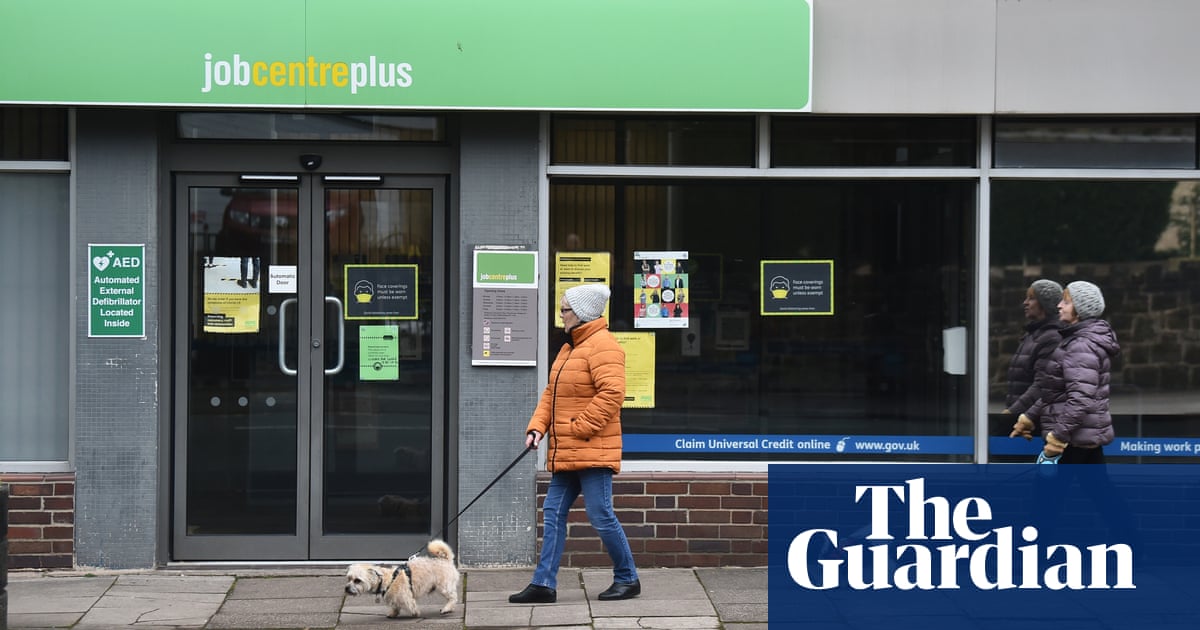
Pay growth is falling sharply and mortgage distress increasing amid fresh signs of the impact of higher interest rates on the UK’s labour and housing markets.
With the economy stagnating, the Office for National Statistics said a marked decline in earnings growth in the three months to October had coincided with jobs becoming harder to find.
In its latest health check on the labour market, the ONS said growth in total average earnings had dropped from 8% to 7.2% in the three months to October – a much bigger drop than the financial markets had been predicting. Meanwhile, the number of job vacancies continued to fall, declining by 45,000 to 949,000 in the September to November period.
The Bank of England, which will announce its latest interest rate decision on Thursday, released separate figures showing the value of outstanding mortgage balances in arrears reached £18.8bn in the third quarter – up 11.4% from the second quarter and by 44% on the year.
While the number of mortgages in arrears is still relatively small, the Bank said the percentage had risen from 1.02% to 1.14% in the latest quarter and was now at its highest level since the spring of 2017.
The level at which pay is increasing is being closely monitored by the Bank’s policymakers to gauge inflationary pressure in the economy and the latest figures will ease fears at Threadneedle Street of a wage-price spiral.
Even so, the financial markets expect the Bank’s nine-strong monetary policy committee to leave official borrowing costs at 5.25% this week. Interest rates were raised 14 times in succession between December 2021 and August 2023.
According to the ONS, total pay in the private sector was 7.2% higher in the three months to October than in the same period a year earlier. Public sector pay grew by 7.1%. Regular pay – which strips out the effects of bonuses – rose by 7.3% in the private sector and by 6.9% in the public sector.
Real pay, the difference between earnings growth and the level at which prices are rising, increased by 1.2%.
Problems with the Labour Force Survey have meant the ONS currently relies on alternative sources of information to assess the state of the UK’s jobs market.
These showed the employment and unemployment rates largely unchanged at 75.7% and 4.2% respectively. The number of pay rolled employees fell by 13,000 between October and December.
Darren Morgan, the ONS director of economic statistics, said: “Our labour market figures continue to show a largely unchanged picture, with the proportions of people who are employed, unemployed or who are neither working nor looking for a job all little changed on the previous quarter.
“Job vacancies fell again. This is now the longest period of decline on record, longer than in the immediate aftermath of the 2008 downturn. Nevertheless, the number of vacancies still remains well above its pre-pandemic level.
“While annual growth in earnings remains high in cash terms, there are some signs that wage pressure might be easing overall. However, as inflation has been falling more quickly, pay continues to grow in real terms.”
Ashley Webb, a UK economist at the consultancy Capital Economics, said: “The sharp fall in wage growth in October will probably further fuel investors’ expectations that interest rates could be cut as soon as the middle of next year, and leaves our forecast for rate cuts to start late in 2024 looking a bit more challenging.
“Overall, the labour market remains tight by historical standards, but the sharp fall in wage growth will reinforce the growing belief in markets that interest rate cuts will start sooner rather than later.”












